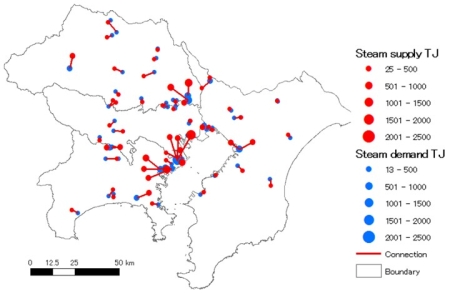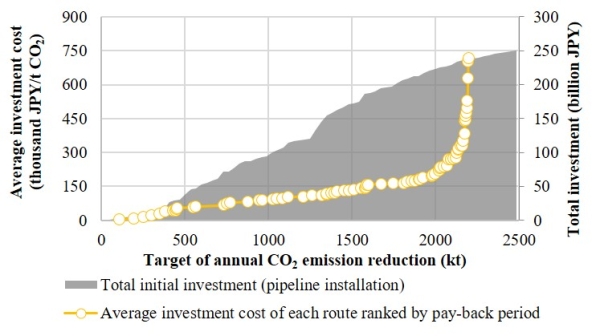論文情報
Feasibility of Developing Heat Exchange Network between Incineration Facilities and Industries in Cities: Case of Tokyo Metropolitan Area
著者:Yi Dou1, 2, Satoshi Ohnishi3, Minoru Fujii1, Takuya Togawa4,Tsuyoshi Fujita1, Hiroki Tanikawa2, Liang Dong1, 5
1 国立環境研究所 社会環境システム研究センター
2 名古屋大学大学院 環境学研究科
3 東京理科大学 理工学部
4 国立環境研究所 福島支部
5 CML, Leiden University
発表年:2018
掲載雑誌:Journal of Cleaner Production, Volume170
論文へのリンク(英文のみ)
著者:Yi Dou1, 2, Satoshi Ohnishi3, Minoru Fujii1, Takuya Togawa4,Tsuyoshi Fujita1, Hiroki Tanikawa2, Liang Dong1, 5
1 国立環境研究所 社会環境システム研究センター
2 名古屋大学大学院 環境学研究科
3 東京理科大学 理工学部
4 国立環境研究所 福島支部
5 CML, Leiden University
発表年:2018
掲載雑誌:Journal of Cleaner Production, Volume170
論文へのリンク(英文のみ)
キーワード
Waste heat recovery, Waste management, Energy efficiency, Land use, Tokyo Metropolitan Area
概要
Energy conservation is critical for promoting urban low-carbon and sustainable development. Because a large amount of heat energy is wasted during energy conversion and transportation, the recovery of waste heat and its cascading use would substantially save resources and reduce CO2 emissions. As a typical case of the Tokyo Metropolitan Area, direct extracting steam from incinerators for industrial use is considered more efficient than power generation, but hard to be popularized because of long distance heat transport. On the basis of the heat atlas, this study develops an integrated model to assess the feasibility of developing heat exchange network between incineration facilities and industries in city scale, and evaluates the impacts from land use on economic and environmental indices. The result reveals that maximum 45.2% of the incineration waste heat can be utilized to cover 13.8% of the heat consumption in industries, where annual net benefit and CO2 emission reduction could achieve 63 billion JPY (≈0.6 billion USD) and 2200 kt CO2/year, respectively. However, current geographic separation between incineration facilities and industries brings a dilemma between economic and environmental benefits which will obstruct the popularization of waste heat exchange. Given this result, a cluster map to classify involved incineration facilities is provided which helps in establishing a renewal strategy considering positive land use adjustment. These results are also referable in urban planning integrated with distributed energy system as well as provide a case for promoting Urban Symbiosis.
クリックすると図が拡大します
クリックすると図が拡大します






